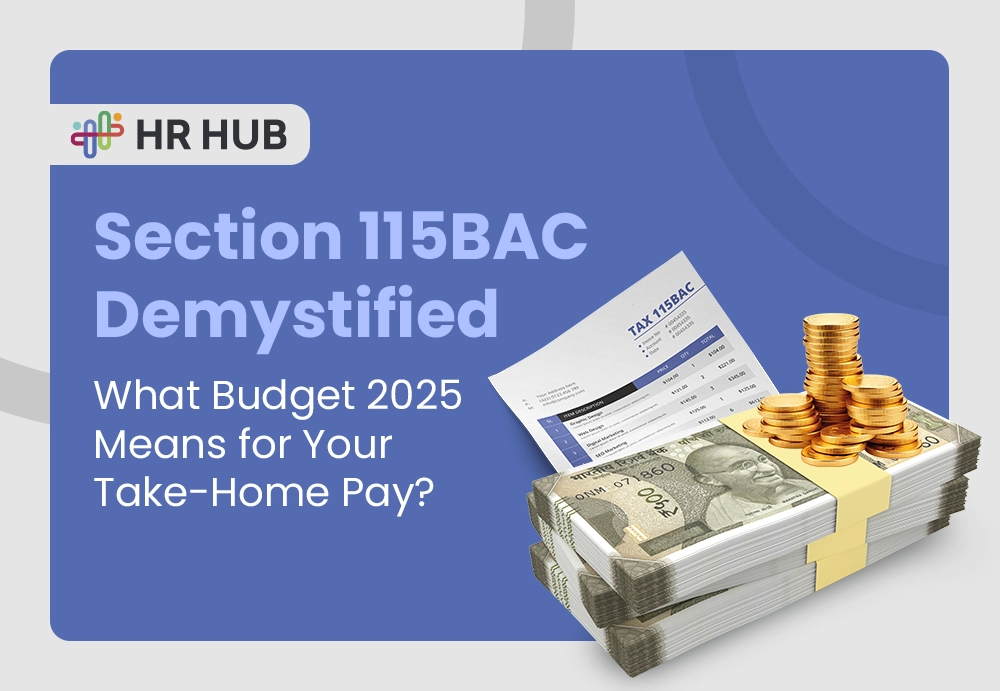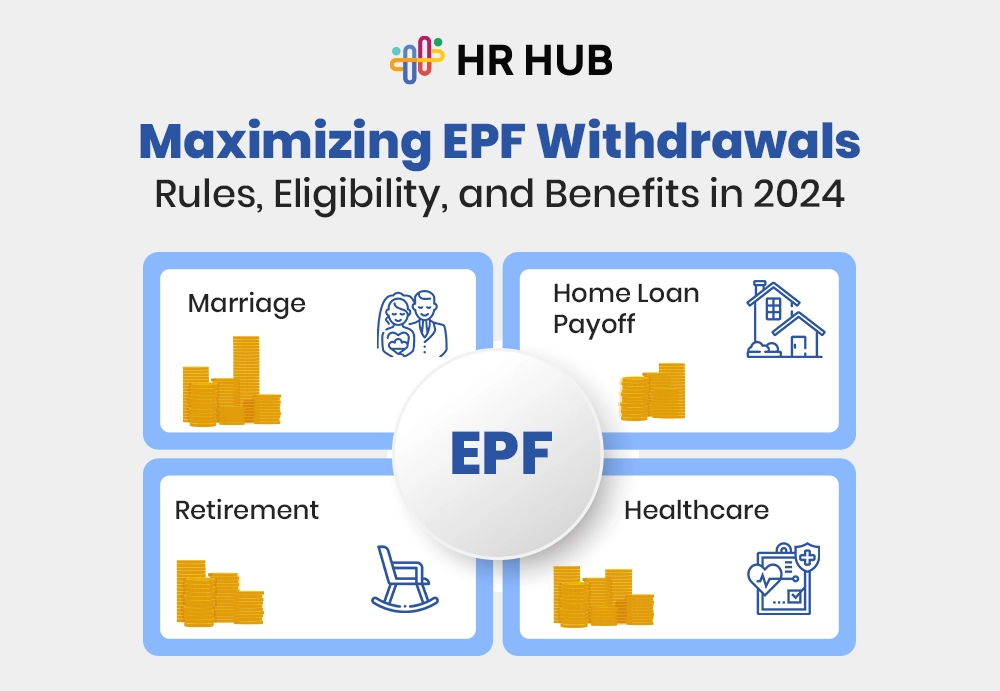


This site uses cookies to deliver our services. By using our site, you acknowledge that you have read and understand our Cookie Policy. Your use of HR HUB's services is subject to these policies.

— Because One Mistake Can Cost More Than Just Money
Let’s be honest—payroll is that one department nobody notices… until it messes up.
Imagine this: It’s the first of the month, and your employees are staring at mismatched salaries, incorrect deductions, or worse—no salary at all. Now, add a visit from a labour inspector who just discovered your company isn’t aligned with the latest Indian payroll laws. Congratulations, you’ve just entered a compliance nightmare.
If you’re thinking, “Isn’t payroll just about paying salaries?”—you’re in for a surprise. In India, payroll compliance is more than spreadsheets and bank transfers; it's a legal battleground where rules change, penalties hurt, and ignorance is never an excuse.
This guide is your no-fluff, no-jargon blueprint to building a payroll system that won’t just run smoothly—it’ll run legally. Let’s break it down.
Payroll isn’t just about paying employees—it’s about building trust, proving integrity, and following the law.
Payroll isn't a plug-and-play operation in a diverse and rapidly evolving country like India. It intersects with labor laws, tax mandates, employee welfare schemes, and region-specific compliance norms. With government scrutiny on the rise and digital compliance enforcement becoming the norm, businesses can no longer treat payroll as a back-office function.
For employees, payroll is personal. It directly affects their livelihood, financial planning, tax filings, and perception of the organization’s professionalism. For employers, it’s a legal obligation—where errors aren’t just embarrassing, they’re expensive.
Getting payroll right in India is no longer optional; it's foundational.

Before you get tempted by shiny payroll software demos or start designing colorful payslips, you need to pause and lay the real foundation. Because payroll in India isn’t a one-size-fits-all operation—it’s a blend of labor laws, state-specific rules, business policies, and operational discipline.
Let’s walk through the essentials every employer must align before hitting “Process Payroll.”
Before payroll, you need to define who you’re paying.
Misclassifying employees can have serious compliance consequences. A freelancer incorrectly shown as an employee could trigger wrongful deductions, while the reverse could invite legal penalties for non-contribution to PF or ESIC.
India’s payroll compliance doesn’t stop at national labor laws—it filters down to state-level statutes too.
Hiring remote or hybrid teams? You’ll need to manage payroll compliance across multiple jurisdictions simultaneously. It’s not just about where your office is—it’s about where your employees are based.
A poorly structured salary can increase tax burdens and derail compliance with Indian payroll laws.
Here’s how to think smart:
Under the upcoming labour code implementation, “wages” are being redefined. If your allowances exceed 50% of CTC, the excess may get pulled back into the “wage” bucket for PF, gratuity, and bonus calculation. In short, what looks tax-friendly today may invite backdated liabilities tomorrow.
Before you roll out your first salary slip, your organization must be legally ready.
Each registration has monthly, quarterly, or annual filing obligations. Missing one could result in delayed salaries, non-compliance penalties, or the inability to issue Form 16 at year-end.
Your internal company handbook should be a mirror, not a contradiction, of national and state labor regulations.
Moreover, with the implementation of the new labour code, things like encashment rules, overtime caps, and record-keeping are becoming more standardized and enforceable. So, keeping your policies legally aligned from day one is wise even if you're a small startup.
Still managing payroll in Excel? That might be fine for 5 people. But what happens when you scale?
You’ll need a payroll system that:
In short, you need a system that’s accurate and compliance-ready by design. Excel won’t warn you if you miss an ESIC threshold—or worse, file an outdated PF return.
Think of payroll like a building—you wouldn’t start with the roof. The first layer? A clear salary structure accommodates your internal compensation policies and statutory requirements.
A typical complaint structure in India includes:
What’s critical is ensuring that your salary breakdown allows for PF and ESIC rule applicability and tax planning and meets thresholds as per Indian payroll laws. A wrong structure can backfire, leading to underpaid taxes, non-compliance notices, or unhappy employees.
Statutory deductions aren’t decorative—they’re core pillars of payroll compliance in India.
Failure to comply with PF and ESIC rules can lead to prosecution, fines, and, in some cases, imprisonment. Moreover, these rules aren’t optional, even for interns or temps who meet the criteria.
You’re not legally safe just because you paid on time. Indian payroll laws encompass far more than punctuality.
Key Acts you must adhere to:
Every act carries filing obligations, record-keeping requirements, and deadlines. A missed register update or delay in Form 16 issuance can flag a compliance failure.
India’s move toward labour reform isn’t cosmetic—it’s transformational.
The labour code implementation initiative merges 29 laws into 4 simplified codes. While it aims to streamline regulations, it also increases the scope of compliance.
Track updates directly on the Ministry of Labour’s Labour Codes page, where the full drafts and gazette notifications are available.
Here’s why it matters:
If your system isn’t flexible enough to adapt to these codes, you'll be left behind. Compliance will soon become real-time, not retrospective.
A functional payroll system isn’t just about calculation—it’s a compliance framework. Here’s what a solid payroll workflow looks like in India:

Even with good intentions, companies make avoidable compliance errors. Here's what to avoid:
A payroll compliance India strategy is incomplete without audit trails, digital registers, and alerts for deadline management.
You don’t need more HR executives—you need better tech.
A modern payroll system saves more than time—it ensures survival. From pre-filling statutory returns to auto-sending reminders for ESIC filings, compliance is transformed into a background process rather than a last-minute panic attack.
Only those with flexible, rule-based payroll systems will stay afloat when labor code implementation kicks in fully.
At HR HUB, the payroll is a powerful process.
Our payroll engine is designed specifically for payroll compliance in India. It covers everything from PF and ESIC rules to adapting to new labour code implementations. With automated statutory filings, integrated KYC flows, customizable salary structures, and real-time dashboards, we turn legal complexity into operational clarity.
Whether you’re onboarding your 10th or 10,000th employee, HR HUB keeps your compliance airtight.
In today’s regulatory landscape, your payroll system isn’t just an internal tool—it’s your legal defense, employee trust anchor, and operational backbone.
So, don’t treat payroll as just another admin task. Build it right for compliance and growth.
And if you're looking for a trusted partner to make that journey seamless, HR HUB is already a step ahead.



Ready to streamline your HR processes? Contact us today to learn how HR HUB can help your organization thrive. Fill out the form, and one of our experts will reply shortly. Let's empower your workforce together!
